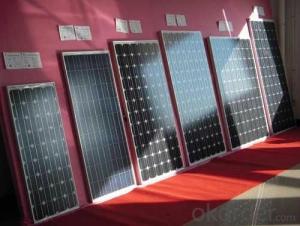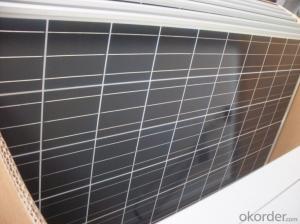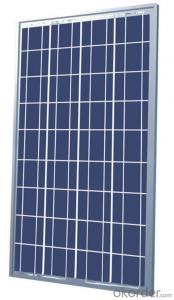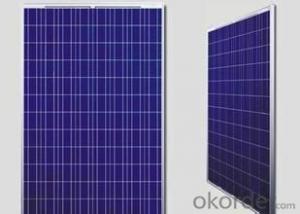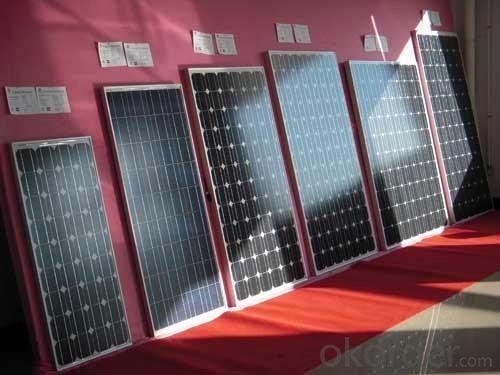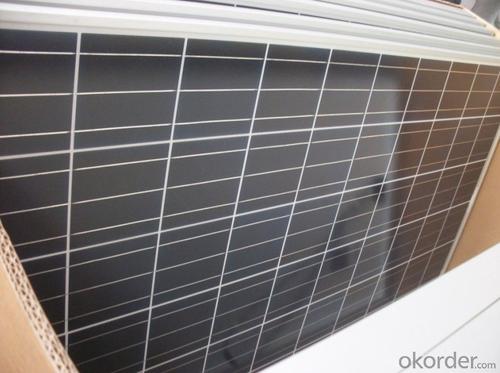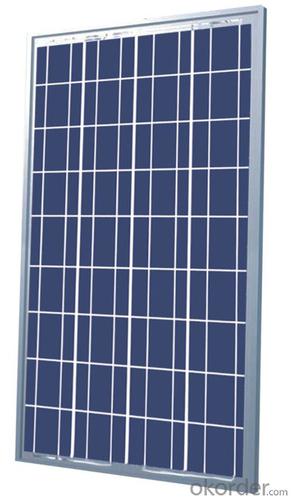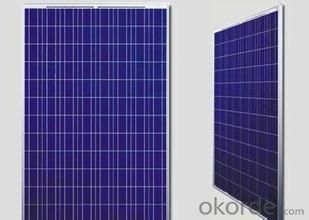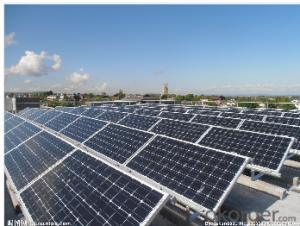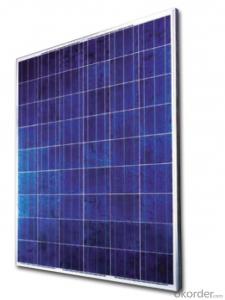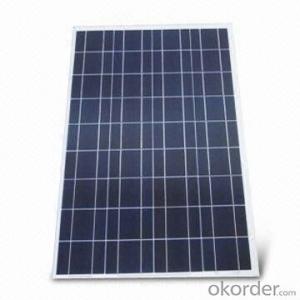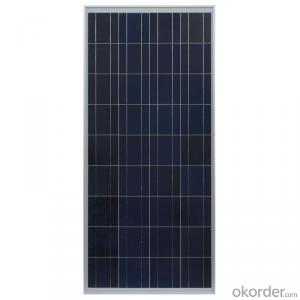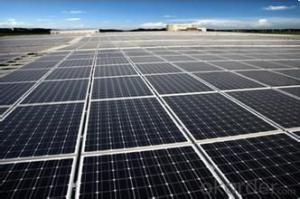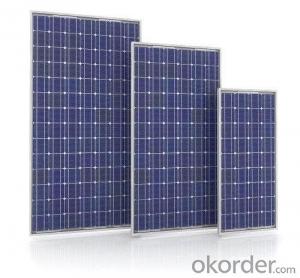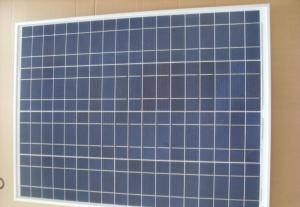3D 250W-300W Polycrystalline Solar Panels on West Coast
- Loading Port:
- Guangzhou
- Payment Terms:
- TT OR LC
- Min Order Qty:
- 26 pc
- Supply Capability:
- 100000 pc/month
OKorder Service Pledge
OKorder Financial Service
You Might Also Like

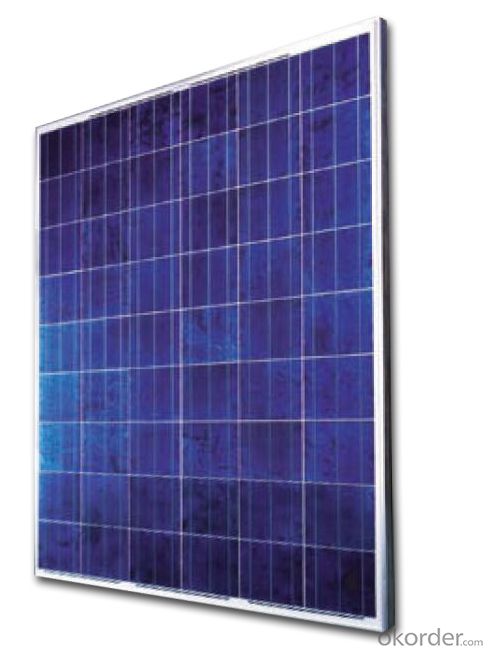
Characteristics of Polycrystalline Solar Panel
I Solar Cell : High efficiency crystalline solar cell. Even if under the weak light, the solar module can produce maximum power output.
II Tempered glass (toughened glass): Anti-reflecting coating and high transmission rate glass increase the power output and mechanical strength of solar module.
III EVA and TPT: Using high quality EVA and TPT to prevent destroying and water.
IV AI frame: Without screw, corner connection. 6 holes on the frame can be installed easily.
V Junction box: Multi function junction box with water proof.
VI Long lifetime: ≥25 years; Less power decrease.
VII Good performance of preventing from atrocious weather such as wind and hails.
VIII Resisting moisture and etching effectively, not effected by geology. .
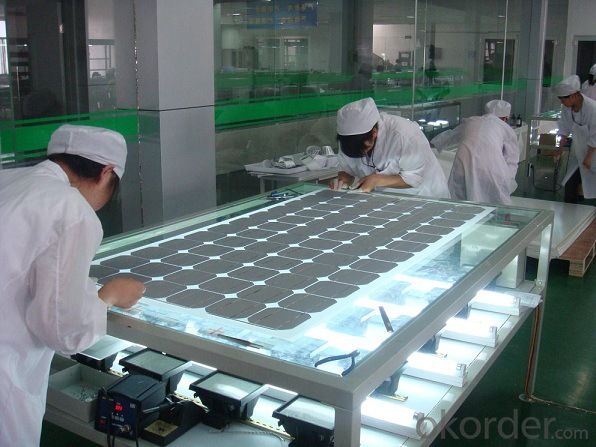
Standard Test Conditions of Polycrystalline Solar Panel
The opto-electrical specifications shown below are stabilized values being measured at Standard Test Conditions of multicrystalline silicon Solar Panel, Irradiance: 1000W/m2, Spectrum: AM1.5 at 25°C, The info below is subject to manufacturing tolerances. Where appropriate minutes of measurement are available and are used for the dimensioning of the installation.
Currently,We have 250w-300w solar panel stocks in Both West and East Coasts made in Vietnam,India,Korea,Malaysia and Japan.Meanwhile,we also arrange production line in Wisconsin,USA.If you're interested,please contact us soon.
Thanks for your time.
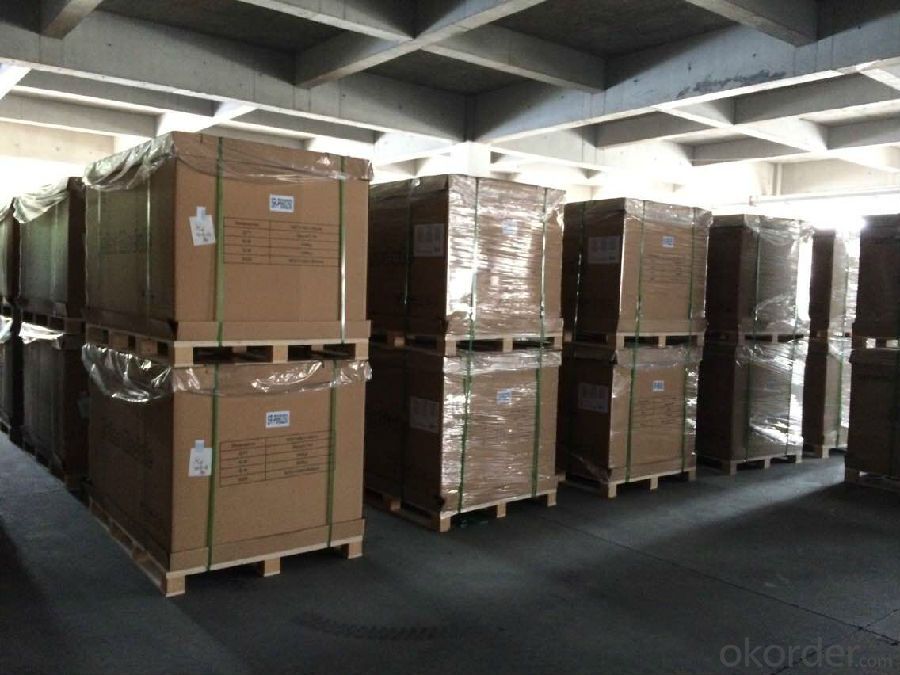
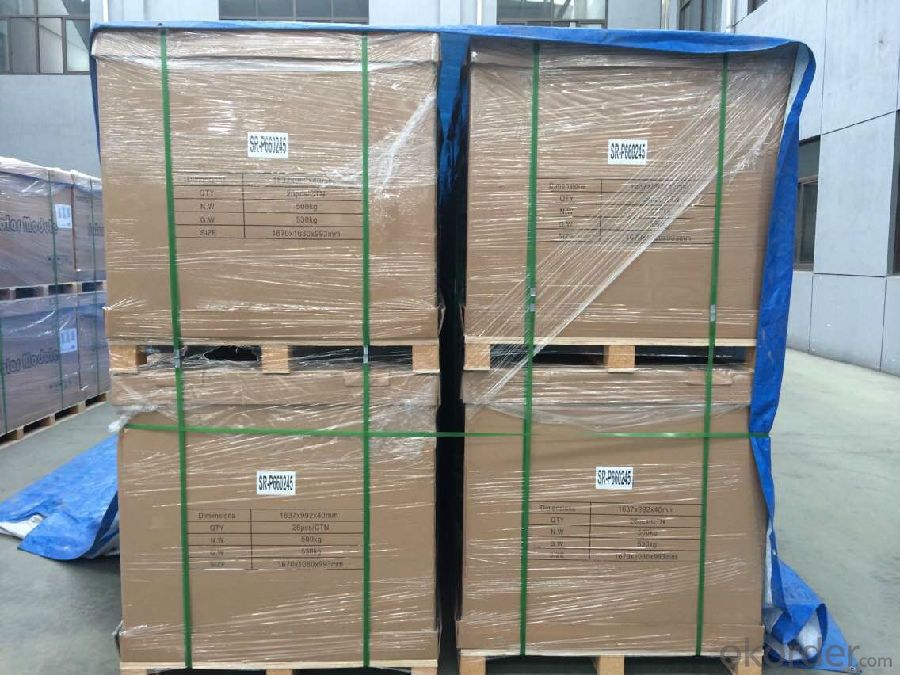
- Q: Can solar panels be installed on walls?
- Yes, solar panels can be installed on walls. While they are commonly mounted on rooftops for optimal sun exposure, they can also be installed on walls using specialized mounting systems. Wall-mounted solar panels are a viable option for locations with limited roof space or where the roof is not suitable for installation.
- Q: what is needed beside the panels and do you need an electrician to hook it up
- The main components for a solar electric system are the panels, racks for mounting the panels, and inverter to convert the panel's DC power to AC, which can be pumped into the grid if necessary. There would also be various electrical supplies involved - wire, conduit, possibly a switch and/or circuit breaker. On the paperwork side, there's a building permit, permission from the power company to connect, and some inspections. Although it could be done by a homeowner, it's not a trivial project, and the best way to get it set up is to contract a professional solar installer. They all give free quotes, and can explain your various options when they visit.
- Q: I have a solar panel i got for free and I don't know what to do with it. Its kinda big at about 20x 0and it puts our 2 VOC / .23 ISC. I don't know of anything that I could use it for. Its too big to say charge a phone or ipod....any suggestions??
- Hey AJ, Tom is quite right, a panel that size is a great trickle charger at .2 amps. If you have a good sized 2 volt battery, like from a truck, or for a boat trolling motor (it should be at least 60 amp hours) you can hook it to the battery and it will charge it slowly anytime the sun shines. Don't worry about the voltage, most 2 volt nominal volt panels are wired for 8 - 9 volts, and if you hook them to a battery, the panel voltage comes right down to the batteries charging curve voltage anyway, they are designed for that. What you do need is a diode. A diode is an electrical check valve, allowing current to flow in one direction, but not the other. This will prevent the battery from discharging through the panel at night. Many panels today come with diodes inside the junction box on the back of the panel. If yours does not have any, go to Radio Shack, look for a 6 amp silicone diode, usually around75 cents. Put it in series between the panel and the battery, then, while you have a voltmeter hooked to the battery, connect the panel/diode to the battery and see if the voltage goes up slightly. If it does, you're all set. If not, turn the diode around and try it again. It has to be connected into the circuit the correct direction. Many people will state that you need a charge controller, but this is not necessary if your panels max current, ISC is less than 2% of your batterys amp hour capacity. In your case, if you have a 60 AH or larger battery, skip the controller. There is a great discussion about this in Richard Perez's book, I will list it below. If you want to learn more about these devices, there is a great magazine that gets into the nuts and bolts of renewable energy, it's called Home Power Magazine, the link is below. We started by hooking a slightly larger panel to some golf cart batteries 2 years ago, reading that magazine and going to some energy fairs. Today our home is completely powered by the wind and sun. Check it out sometime. Take care, Rudydoo
- Q: I am fairly new to the solar panel scene, and am eager to try to set one up myself instead of buying a kit. I am looking for a solar panel that puts out 00 Watts or more, and can produce more than 20 volts. Thanks
- Build okorder /
- Q: Okay, I think I understand what I'm doing, but I want to set up some solar panels on the roof of my garage, the building that gets the most sun, and I want to make sure all my math is correct in determining number of megawatts per year. However, my knowledge of electrical terms in quite n00bish, to say the least.Here is what I think I should be doing.The solar cells come at .75 Watts average power.I will install 4 panels of 64 cells each, with a total of 256 cells.
- For comparison, 36 of these make a normal 2V x 50W panel. Note they are not tabbed. This means you have to find a way to connect them yourself. The tabs are probably spot welded on by the suppliers. A supplier below has kits of these with tabs, as needed to connect them together. These are not suitable for grid connect, because the higher voltage needed makes do it yourself panels a dangerous and litigious thing to have on your roof. Maybe you could buy a smaller pack from the link below to compare tabbed and untabbed and work out what to do. Your power calculation is a bit incorrect because the sun is only present some of the time. The 36 cell module would produce 50W when square on to the full sun. The sun may be out for around 2h a day in some places and times of the year. However it is the equivalent of 5h full sun, because of the changing angle throughout the day. Look this up on the internet for your region. Temperate zones may be a lot less. One pack in your link is 36x3 = 08 cells. Thus 50W per pack x 5h a day gives 750Wh per day and 274KWh/y. In reality it will always be less because of regions, weather, clouds, dust, inefficiencies, aging of cells.
- Q: Have a 20V 40W solar panel and it is attach to two backup batteries. Just want to know know how many watt of inverter do I need?
- It depends on what you want to run from the panel. A 20W inverter might last a long time, but would not run much. A 00W inverter might run down your batteries in a few hours. It might help if you posted how much capacity (Volts, Amp-Hours) the batteries have.
- Q: How do solar panels impact the local job market?
- Solar panels have a positive impact on the local job market as they create new employment opportunities in the renewable energy sector. The installation, maintenance, and manufacturing of solar panels require skilled workers, which leads to job growth and economic development in the community. Additionally, the transition to solar energy promotes a shift towards clean energy sources, attracting more investments and creating a sustainable job market for the future.
- Q: I don't remember what number exactly but it's in the single digits. This number represents how efficient solar panels are at capturing the sun's rays and converting it into electricity.Why?
- first okorder /
- Q: Can we cover up solar panels on our house with regular siding?
- Finding okorder /
- Q: I want to build a standalone wifi repeater -- powered by the sun. The problem is how much solar power and how big of a battery?net draw 4.5v @ 0.66A with loadnet draw 4.5v @ 0.60A no loadI'm assuming the best choice would be a 6v battery with a a couple diodes in series to induce ~.5v drop. Then, I need something to charge it -- I found 2v 6w solar chargers in the automotive section of Sears and 6v 2w solar chargers in the marine section of Dick's Sporting Goods.How many solar panels and what capacity batteries should I use? Is this the best method or should I use a voltage regulator and go with 2v batteries?I need this to be as cheap and simple as possible...
- You won't get very far with THAT lash-up. First of all.. WHY would you want to use diodes to drop the voltage.. they DRAW CURRENT and that is something you don't have to spare. That draw of (660 ma) comes out to just under 3 watts. You DO KNOW that you can get that 4.5 Volts by driving a NAIL into the THIRD CELL in a 6 Volt wet cell battery... right? and for what you are doing, you have more current available with a 6 volt battery than a 2 volt battery. Anyway, you could use two 6 Volt batteries and tap them at the 4.5 volt point then tie them in parallel, but you could still use the 6 volt solar panel to charge them. Trying to use an inverter is just an exercise in futility.. With TWO of the LARGEST DEEP CYCLE BATTERIES you can buy at AutoZone running in Parallel and being charged by solar panels.. if you hook a 75 watt inverter to them, they will go flat in about 4 hours of use during the night. This is not rocket science. Back when cars were changing over from 6 volts to 2 volts, I powered up more than one 6 volt car radio off a 2 volt battery... when you grow up as poor as I did.. you get inventive. I later used the same trick on the 24 volt electrical systems the Jeeps were using, to power up clandestine repeaters in places where no repeaters should have been. About 25 years ago I was living in the Denver area and built up a 0 watt 2 meter repeater on a split channel and took it up to Mt. Evans during the summer and hid it in a pile of rocks. I used tone control, so we were the only ones using it and, as I said, It was a split channel.. so it wasn't on a regular repeater channel. That thing was still running when I moved from the Denver area about 3 years later and for all I know, It's still up there on Mt. Evans (find the Brittlecone Pines and look towards that small peak about a mile to the west)
Send your message to us
3D 250W-300W Polycrystalline Solar Panels on West Coast
- Loading Port:
- Guangzhou
- Payment Terms:
- TT OR LC
- Min Order Qty:
- 26 pc
- Supply Capability:
- 100000 pc/month
OKorder Service Pledge
OKorder Financial Service
Similar products
Hot products
Hot Searches
Related keywords
